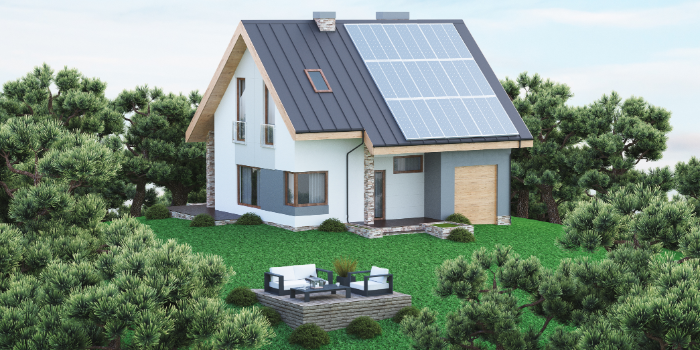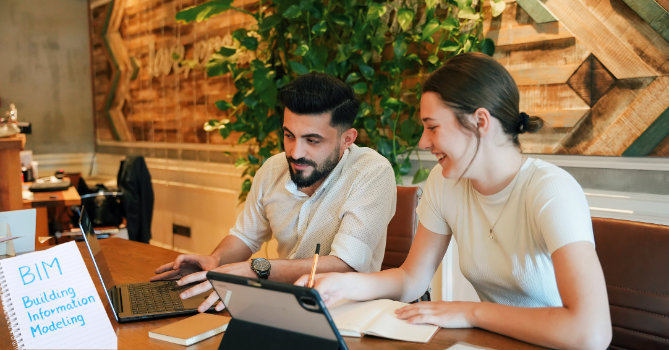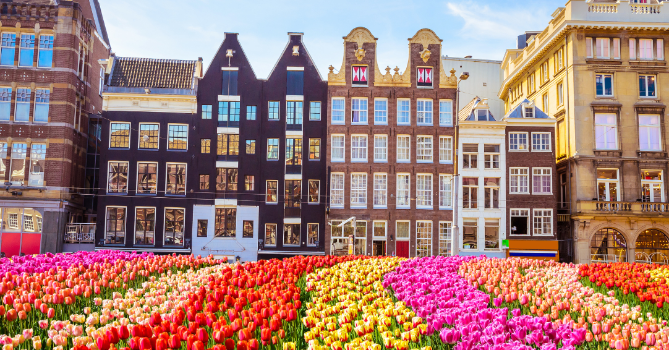
Eco-Friendly Building: Unveiling BIM's Potential for Sustainability
Building things the right way matters more now than ever. Why? Because the planet's health and our future depend on it. That's where Building Information Modeling, or BIM for short, comes into play. It's not just a fancy tool for architects and engineers. It's a game-changer for making buildings better for the earth.
Think of BIM as a superhero for sustainable architecture. It helps design buildings that use less energy, waste fewer materials, and fit beautifully into our environment. But how does it do that? By letting architects see exactly what a building will look like and how it will act in the real world, even before it's built. This means fewer surprises and less redoing work, which is great for the planet and our wallets.
Some folks might think BIM is only for the big, flashy projects. Not true. It's for any project that aims to be kinder to our planet. And in today's world, every project should have that goal.
So, we're diving into how BIM helps us build more sustainably. We'll bust some myths, share cool examples, and show how it's not just about making buildings that stand tall but making them stand right by the earth. Whether you're an architect, a builder, or just someone who cares about our world, there's something in this for you. Let's explore how building smarter with BIM is building for a better future.
Let's talk straight about BIM, or Building Information Modeling. Some folks have the wrong idea about it, especially when it comes to making buildings greener and more sustainable. It's time to clear the air on a few of these myths.
First up, some say BIM is only for the big guns - the massive projects with budgets that make your eyes water. Not true. BIM is for any project, big or small, that wants to be smarter about resources and energy. It's like the smart assistant that helps make better choices from start to finish, no matter the project size.
Then there's the idea that BIM is too complex or too high-tech for most teams. But here's the thing: BIM tools today are more user-friendly than ever. They're designed to be picked up by anyone in the building process, from architects to contractors. Sure, there's a learning curve, but isn't that the case with anything worth doing?
Another misconception is that BIM is just about creating cool 3D models. Yes, it does that, and yes, they're really cool. But BIM's real power is in making buildings that use less energy and produce less waste. It's about looking at the whole picture - how a building lives in its environment and serves its people over time.
Lastly, some folks think BIM doesn't affect them. But whether you're a builder, an architect, or just someone who will work or live in these spaces, BIM impacts how sustainable and efficient these buildings are.
So, let's move past these misconceptions. BIM isn't just the future of building; it's the smart way to build right now, for the planet and for us.

Building sustainably isn't just a nice idea; it's a necessity. And BIM, or Building Information Modeling, is playing a huge role in making it happen. Here's the lowdown on how BIM is pushing the green building movement forward, piece by piece.
Understanding the Big Picture: BIM isn't just about building more efficiently; it's about building with the future in mind. By using BIM, architects and engineers can see the long-term impacts of their designs—like how a building will use energy or interact with its surroundings over time. This means making smarter choices early on, which can lead to buildings that are friendlier to our planet.
Waste Not, Want Not: One of the coolest things about BIM is how it helps cut down on waste. By creating a super detailed digital model of a building before the first shovel hits the ground, BIM helps teams spot potential problems and make changes without wasting materials. This doesn't just save money; it also means less stuff ends up in the landfill.
Energy Efficiency from the Get-Go: With BIM, designing energy-efficient buildings becomes a whole lot easier. By simulating different scenarios, architects can see how changes affect a building's energy use. Want to know if solar panels will make a difference? BIM can show you. Curious about the best place to put windows for natural light? BIM has you covered there, too. This kind of insight is invaluable for creating buildings that don't just look good but are good for the environment.
Collaboration is Key: Sustainable building is a team sport, and BIM is the ultimate collaboration tool. It brings everyone together—architects, engineers, contractors, and even clients—around a shared digital model. This means everyone is on the same page from day one, making it easier to work towards common sustainability goals. Plus, when people can easily share ideas and feedback, innovation flourishes.
Adapting to Change: Our world is changing fast, and buildings need to keep up. BIM makes it easier to design buildings that can adapt to future needs—whether that's changing weather patterns or new technologies. By thinking ahead, we can create spaces that aren't just sustainable today but for years to come.
Real-World Impact: Here's where it gets really exciting—seeing BIM in action. Take the Miami Science Museum, for example, designed with sustainability at its core. Or how about the WeWork office spaces, which use BIM to quickly adapt their interiors for new members. These aren't just concepts; they're real places where people live, work, and learn, all made more sustainable through BIM.
In a nutshell, BIM is much more than a buzzword in the construction world; it's a powerful tool that's helping us build a more sustainable future. By making the entire building process more efficient, reducing waste, and encouraging collaboration, BIM is leading the charge towards a greener, more resilient built environment. So next time you see a building going up, think about the invisible digital blueprint behind it, pushing us closer to a sustainable world.
Looking at how BIM brings sustainable architecture to life, let's dive into some case studies that show this technology in action.
First, consider the Edge in Amsterdam, dubbed the world's most sustainable office building. Through the use of BIM, its developers could integrate smart technology and sustainable design from the ground up. The building features a vast array of solar panels, rainwater harvesting for flushing toilets and irrigating green spaces, and an ethereal design that maximizes natural light and reduces energy use. The Edge is a prime example of how BIM can optimize resource efficiency and sustainability in office buildings.

Another shining example is the Pixel building in Melbourne, Australia. This colorful, cube-like structure stands as a testament to what's possible when BIM and green design principles come together. The Pixel achieved a perfect score under the Green Star rating system, thanks to features like a green roof, carbon-neutral operations, and photovoltaic panels. BIM played a crucial role in coordinating these complex systems and ensuring the building's sustainability goals were met from design through to construction and operation.
These case studies illustrate the tangible benefits of integrating BIM into sustainable architecture. By allowing for precise planning, efficient use of resources, and innovative environmental solutions, BIM helps create buildings that are not only better for the planet but also for the people who use them every day.
As we wrap up, it's clear that BIM is not just a tool for today but a foundation for the future of sustainable architecture. It bridges the gap between innovative design and environmental responsibility, pushing us towards a world where buildings contribute positively to our planet.
The road ahead is exciting. As BIM technologies evolve, we can expect even more powerful features that make sustainable building easier and more efficient. Imagine smart buildings that can adapt to their environment in real-time, or construction processes that produce zero waste. This is the future BIM is leading us towards.
But the journey doesn't stop with technology. It's about people—architects, engineers, builders, and all of us—embracing these tools to make smarter, greener choices. As we look ahead, the role of BIM in sustainable architecture is only set to grow, offering new ways to solve old problems and opening doors to innovations we've yet to imagine.
In short, the future of building is green, and BIM is the key to unlocking it. Let's continue to explore, innovate, and build a sustainable world, together.